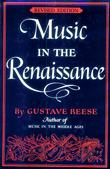Gabrieli, Andrea
Period: Renaissance
Born: c. 1533 in Venice, Italy
Died: Friday, August 30, 1585 in Venice, Italy
Nation of Origin: Italy
Major Works:
Madrigals, motets, masses, sacred music in a variety of forms, stage music, ricercari and canzones for organ
Other Information:
Most published sources list Andrea Gabrieli's dates as (c.1510 to 1585). Marty Morell, a 16th-century scholar of Italian vocal music, has contacted the dictionary to share some recent research on the life of Andrea Gabrieli. Many thanks to Marty Morell for his assistance in updating this record.
Gabrieli was probably born in 1532 or 1533. These new dates are based on a recently-discovered register that records Andrea Gabrieli's death on 30 August, 1585 at 'about 52 years of age.' His name appears as 'Andrea da Cannaregio' in documents of the time.
Quick Facts
- Italian Organist and Composer
- Once thought to have been a chorister at St. Mark's Basilica in 1536. His updated birth and death dates make this unlikely.
- Organist for church of San Geremia 1555 to at least 1557
- During his teens or twenties he have known Vincenzo Ruffo in Verona
- Competed for organist position at St. Mark's Basilica in 1557 and lost to Claudio Merulo
- Traveled in Rhineland, Bohemia, Verona, and Milan
- In 1562 he traveled with Lassus (1532 - 1594) in the service of Duke Albrecht V of Bavaria on the way to the coronation of emperor Maximilian II. Gabrieli's music was influenced by that of Lassus.
- Thought to have had contact with the court of Munich.
- Possibly a pupil of Adrian Willaert (c.1490 - 1562) or, more likely, Vincenzo Ruffo (c.1510 - 1587)
- Organist at St. Mark's Basilica in Venice beginning in 1566. Claudio Merulo also worked as an organist there during that time. Gioseffo Zarlino worked there as maestro di cappella.
- Uncle and teacher of Giovanni Gabrieli who became the other organist at St. Mark's in 1585 after Claudio Merulo left in 1584.
- Probably taught Sweelinck. He is also believed to have taught Hassler, Aichinger, and Zacconi.
The double-choir, double-organ configuration of St. Mark's was first developed by Adriaan Willaert beginning in 1527. Willaert's pupils included Gioseffo Zarlino, Cipriano de Rore, and possibly Andrea Gabrieli. Gabrieli further refined and perpetuated the double-choir, double-organ tradition. His nephew Giovanni then carried the tradition to its apex and influenced a host of Italian and German composers of the late Renaissance and early Baroque eras.
Composer Bibliography:
M. Morell: 'New Evidence for the Biographies of Andrea and Giovanni Gabrieli,' EMH, iii (1983)
General Bibliography:
Reese, Gustave, Music in the Renaissance, W.W. Norton & Company; November 1959, ISBN: 0393095304
Sachs, Curt, The Rise of Music in the Ancient World , W. W. Norton & Company, 1943, ASIN: 0393097188
Slonimsky, Nicolas and Kuhn, Laura; Editors, Baker's Biographical Dictionary of Musicians, Gale Group, December 2000, ISBN: 0028655257
Sadie, Stanley and Tyrrell, John; Editors, The New Grove Dictionary of Music and Musicians, Groves Dictionaries, Inc., January 2004, ISBN: 0195170679
Rutherford-Johnson, Tim, Kennedy, Michael, and Kennedy, Joyce The Oxford Dictionary of Music, Oxford University Press, 6th Edition, 2012, ISBN: 0199578109
Links to essays at other sites:
Please note: Each link will open in a new window.
Biographical essay from Wikipedia
